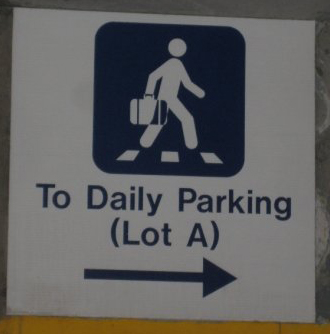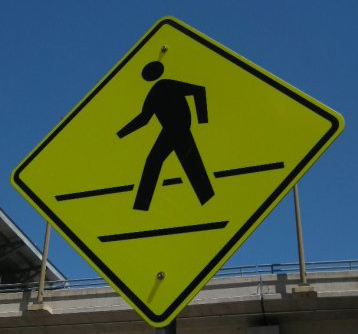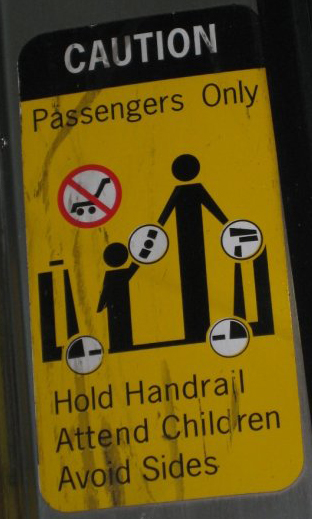











| Should this be true and the signs are being the example, then one question that arises is why such oversimplified images are used. It would not be much harder to use actual pictures of people in these signs and may even give a little more information. Leeuwen and Kress offer a reason behind this simple yet incorrect statement of what people in airports (or people in general) look like. They say that "in order to move from the reality to its photograph it is in no way necessary to divide up this reality into units and to constitute these units as signs, substantially different from the object they communicate... certainly, the image is not the reality but at least it is its perfect [analogue] and it is exactly this analogical perfection which, to commonsense, defines the photograph" (Kress 23). It is this idea, that circles hovering above a rectangular body with strangely shaped legs, that is okay to have, but why? How did this become the norm for presenting people taking action, especially in the concept that these images are supposed to present the "real life example" of how to take action in and around the premises? It seems that the airport pictures become a "conventional visual arrangement, based on a visual code" (Kress 23). Since code is always created with power structures in place, then the airport has seemingly used its authority to create basic ideas that are good enough to guide willing people. The application of this idea also allows multiple audiences to access the information; even those that have never before seen signs like this would likely comprehend the idea that the people represent the person(s) looking. Thusly, the power that has been encoded into the signs of the airport seem to carry with them the power/knowledge that to generalize, overemphasize, and simplify possible characteristics is not only expected but also, due to the large extent of its audience, welcomed. The effect this has is that "the new climate of interactivity blurs the dividing line between producer and consumer" (Poster 327). It is in this blurring of the line that allows the airport to help with providing the example for the people while at the same time addressing the masses in an easily understood way. Doing this, both the airport and those that go to the airport take part in what is called the logonomic system, agreeing upon specific regimes for how to produce and receive specific meanings in the images. | 
|